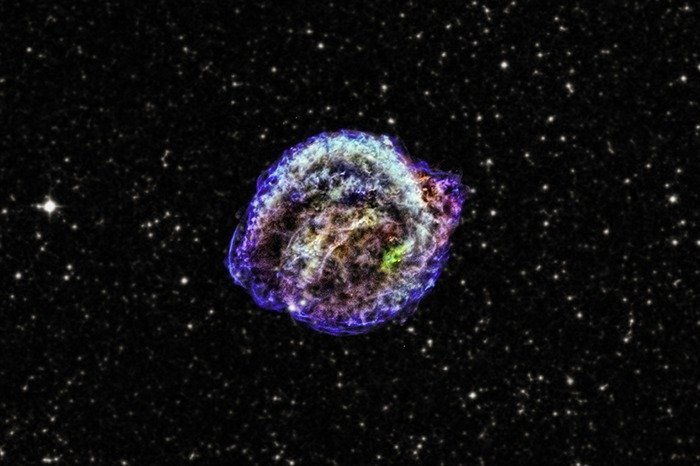Kepler supernova. Credit: X-ray: NASA/CXC/NCSU/M.Burkey et al.; optical: DSS
ARLINGTON, Texas, April 8 (UPI) -- Scientists say a satellite "post-mortem" of a supernova observed in 1604 by German astronomer Johannes Kepler has yielded insights into such cosmic explosions.
An analysis of X-ray observations from the Japan-led Suzaku satellite mission shows the exploding held a greater fraction of heavy elements than our sun, NASA reported Monday.
Such findings will help astronomers better understand the diversity of this type of explosion, known as a type Ia supernovae, an important class of stellar occurrence used in probing the distant universe and its makeup, the space agency said.
"The composition of the star, its environment, and the mechanism of the explosion may vary considerably among type Ia supernovae," said Sangwook Park, a professor of physics at the University of Texas at Arlington. "By better understanding them, we can fine-tune our knowledge of the universe beyond our galaxy and improve cosmological models that depend on those measurements."
The Suzaku satellite's instruments allowed astronomers to perform a kind of post-mortem examination on the shell of hot, rapidly expanding gas produced by the explosion.
Chemical signatures in the supernova remnant provide a clearer picture of the composition of the star before it blew up and can also give clues to the star's age when it destroyed itself, astronomers said.
"Theories indicate that the star's age and metal content affect the peak luminosity of type Ia supernovae," Park said. "Younger stars likely produce brighter explosions than older ones, which is why understanding the spread of ages among type Ia supernovae is so important."
Measurements of type Ia supernovae led to the discovery that the expansion of the universe is picking up speed, an effect attributed to an enigmatic force called dark energy, the focus of a search that has become a top science goal, astronomers said.















